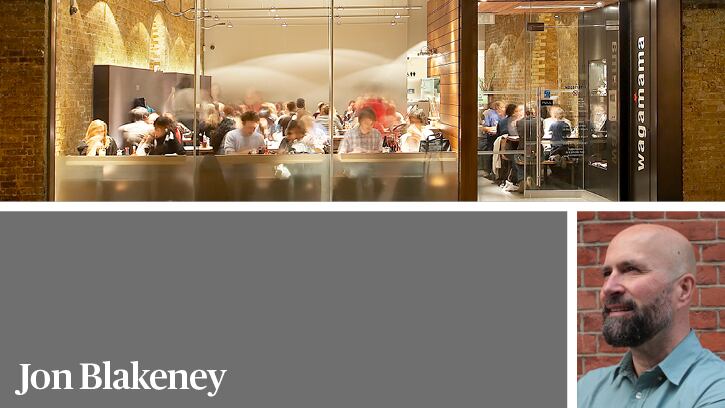In the early 1990s, the UK food scene was drastically different from today's bustling, innovative landscape. It was during this time that Wagamama, whose owner The Restaurant Group was recently bought for £506m, emerged as a ground-breaking entity, introducing a dining experience that challenged norms and redefined casual eating. Its success lay not only in serving great Japanese cuisine but in the revolutionary design choices that differentiated it from traditional UK restaurants.
Wagamama is an increasingly rare success story in the casual dining sector, particularly post-pandemic. Several mid-market names like Byron, Gourmet Burger Kitchen, Strada, and Carluccio’s have faced multiple closures in recent years.
In fact, Andy Hornby, the boss of The Restaurant Group, told The Telegraph last year he “did not believe casual dining would ever recover to its pre-pandemic size”. So, how can those businesses still in the sector, or looking to enter, use the lessons from Wagamama to ensure their longevity?
Design innovation
Martin Scorsese once said that his best tip for budding filmmakers is this: when you’re making a film, always protect the spark of the idea, because throughout the process you will be bombarded with other people’s opinions and reasons to change what you are doing. Restaurateurs should take note.
For Wagamama, its ‘spark’ was its design philosophy. Founder Alan Yao's visionary approach defied conventional wisdom. The restaurant's communal tables and open kitchen weren't merely functional—they were strategic elements that fostered a sense of community and engagement among diners.
The communal tables, uncommon in British dining culture then, created a sense of belonging and appealed particularly to a younger crowd, unlike smaller tables. This was coupled with the restaurant's distinctive imagery that put just as much emphasis on the people eating as the food itself.
Of course, breaking away from the norm is never easy. Displaying the kitchen openly poses operational and behavioural challenges for any restaurant and can affect team dynamics. It soon became Wagamama's dining centrepiece, leading to “Wagamama-style” set-ups becoming an industry norm.
What Wagamama’s creators recognised was that being able to see the kitchen creates a sense of pace and dynamism and actually helps to reduce the perception of wait times. Wagamama is not designed for a long dining experience, a commercially astute move allowing it to turn tables quickly. This fusion of function and spectacle has driven its success.
Navigating growth and expansion
As Wagamama grew, its success lay in the brand’s ability to protect what Scorsese would call its ‘spark’ while evolving with the times. It has diversified its dining styles, integrating smaller tables alongside communal ones to adapt to evolving preferences, for example.
Changes in ownership pose a significant risk to a brand’s spark. Wagamama has been through several owners since 1992 but, importantly, has managed that change while staying true to its DNA. The current Wagamama expression is a smart evolution from its initial offering, which has always focused on the whole dining experience, rather than just the food.
Thinking like a brand is crucial for resilience: it means understanding what makes a restaurant unique and beloved, at the same time as giving the audience what they want. Though, of course, it won’t go anywhere if there isn’t a strong product at its core.
Recent pandemic closures demonstrate this, but have also created opportunities for newcomers, like Pizza Pilgrims, Rosa’s Thai, and Shoryu Ramen, to initiate their own expansions. Yet, success is not guaranteed. Jamie’s Italian is a prime example: it was loved by many when it opened but its quick expansion, coupled with a tough market, meant it diluted its offering in both experience and food, ultimately leading to its demise.
Protect the spark
The peril lies in the temptation to economise: when seemingly innocuous cost-saving measures gradually erode a brand’s identity. Each decision, from reducing dumpling sizes to cheaper chairs, seems sensible individually but collectively transforms the business unrecognisably.
The recent acquisitions of Franco Manca, The Big Mama Group and Leon will be interesting ones to watch. So, for these expanding chains—and the newcomers in this space – the crucial question arises: who safeguards the spark? That will be the question that makes all the difference.
Jon Blakeney is group managing director at I-AM

